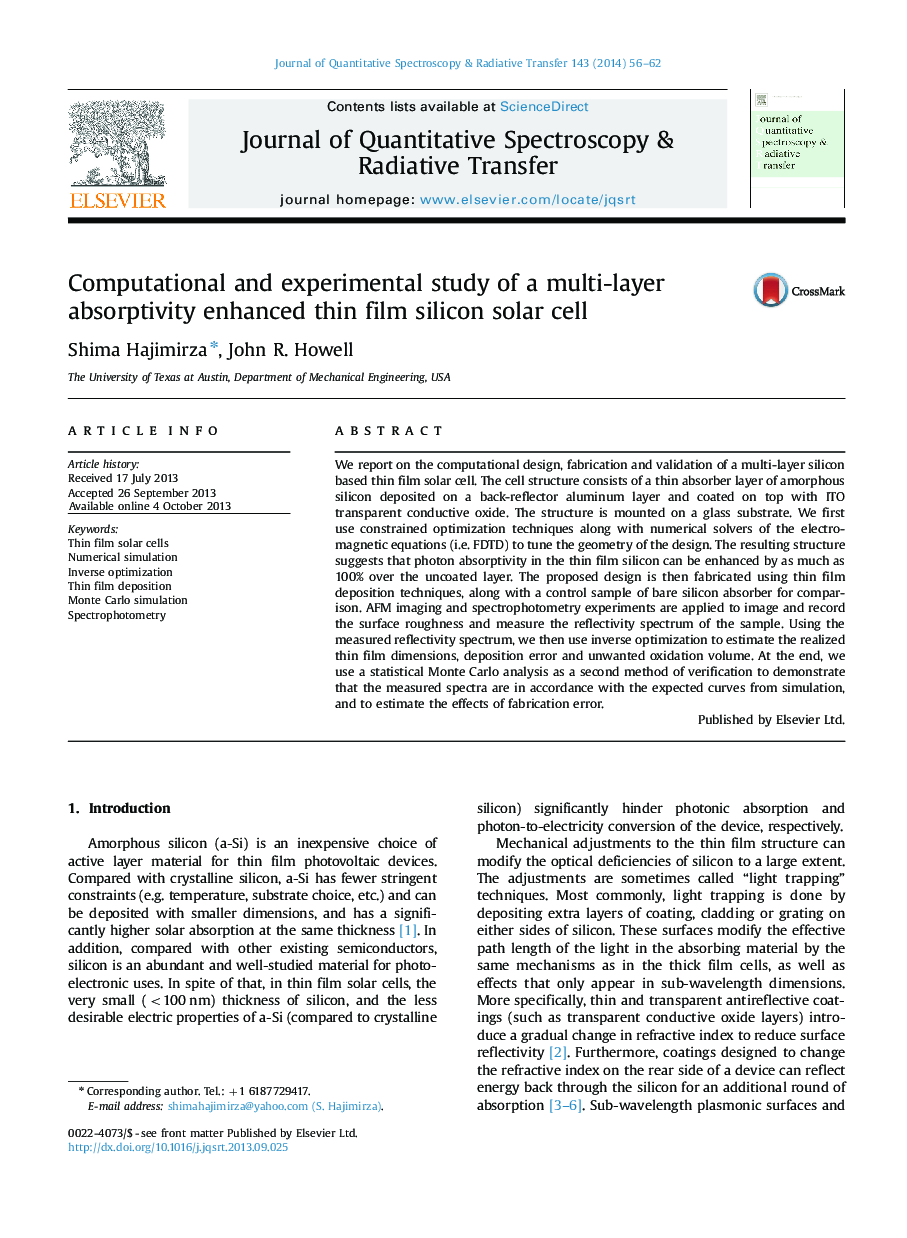| Article ID | Journal | Published Year | Pages | File Type |
|---|---|---|---|---|
| 5428342 | Journal of Quantitative Spectroscopy and Radiative Transfer | 2014 | 7 Pages |
â¢Design, fabrication and validation of multi-layer silicon solar cell are studied.â¢The cell consists of aluminum, amorphous silicon and ITO layers.â¢The proposed designs are fabricated by deposition techniques.â¢Inverse optimization is used to estimate the realized dimensions and errors.
We report on the computational design, fabrication and validation of a multi-layer silicon based thin film solar cell. The cell structure consists of a thin absorber layer of amorphous silicon deposited on a back-reflector aluminum layer and coated on top with ITO transparent conductive oxide. The structure is mounted on a glass substrate. We first use constrained optimization techniques along with numerical solvers of the electromagnetic equations (i.e. FDTD) to tune the geometry of the design. The resulting structure suggests that photon absorptivity in the thin film silicon can be enhanced by as much as 100% over the uncoated layer. The proposed design is then fabricated using thin film deposition techniques, along with a control sample of bare silicon absorber for comparison. AFM imaging and spectrophotometry experiments are applied to image and record the surface roughness and measure the reflectivity spectrum of the sample. Using the measured reflectivity spectrum, we then use inverse optimization to estimate the realized thin film dimensions, deposition error and unwanted oxidation volume. At the end, we use a statistical Monte Carlo analysis as a second method of verification to demonstrate that the measured spectra are in accordance with the expected curves from simulation, and to estimate the effects of fabrication error.
